After a big hit like Skyfall, how does 007's next adventure fare?
Viewing: Blog Posts Tagged with: james bond, Most Recent at Top [Help]
Results 1 - 25 of 44
Blog: PW -The Beat (Login to Add to MyJacketFlap)
JacketFlap tags: Movies, 007, james bond, Movie Review, Movie Reviews, Daniel Craig, Top News, Sam Mendes, Add a tag
Blog: OUPblog (Login to Add to MyJacketFlap)
JacketFlap tags: History, Literature, film, 007, james bond, american history, spies, CIA, cinema, daniel craig, intelligence, watergate, ian fleming, British history, *Featured, Spectre, TV & Film, Judi Dench, Arts & Humanities, Bimini Run, in spies we trust, rhodri jeffreys-jones, Add a tag
The durable Bond is back once more in Spectre. Little has changed and there has even been reversion. M has back-morphed into a man, Judi Dench giving way to Ralph Fiennes. 007 still works miracles, and not the least of these is financial – Pinewood Studios hope for another blockbuster movie. Hollywood roll over and die.
The post Spectre and Bond do the damage appeared first on OUPblog.
Blog: OUPblog (Login to Add to MyJacketFlap)
JacketFlap tags: Books, Music, james bond, quantum of solace, *Featured, Audio & Podcasts, Adrian Daub, Pop Anthems of Late Capitalism, The James Bond Songs, bond movies, Charles Kronengold, film music history, license to kill, spotify playlist, Add a tag
If you’re getting ready for the new Bond movie—and its soon-to-appear title song—you might want to sift through the history of this 50-year-old franchise and think about your favorite Bond films and songs. But how many songs do you remember once you get past “Goldfinger” and “Live and Let Die”? We dug into the ones you might not recall, and those we believe deserve another listen. Here are our top 10.
The post The James Bond songs: Best of the forgotten and underrated appeared first on OUPblog.
Blog: Galley Cat (Mediabistro) (Login to Add to MyJacketFlap)
JacketFlap tags: James Bond, Publishing, People, Anthony Horowitz, Ian Fleming, Add a tag
Blog: OUPblog (Login to Add to MyJacketFlap)
JacketFlap tags: Adele, *Featured, TV & Film, Adrian Daub, james bond, daniel craig, Spectre, Music of James Bond, Sam Smith, Charlie Kronengold, Pop Anthems of Late Capitalism, The James Bond Songs, Books, Music, Add a tag
Now’s the moment to be a fan of the Bond songs. SPECTRE, the new film, comes out this November. That means we’ll hear an official unofficial leak of the title song sometime this summer. Everybody’s been guessing who the singer is. Twitter says it'll be Sam Smith or Lana Del Rey. Sam Smith says it isn’t him and claims that he “heard Ellie Goulding was going to do it.” The Telegraph wants to know why no one has considered Mumford and Sons (don’t answer that). Even Vegas is paying attention. Who would you put your money on?
The post Who will be singing the next Bond song? Who should be? appeared first on OUPblog.
Blog: Galley Cat (Mediabistro) (Login to Add to MyJacketFlap)
JacketFlap tags: James Bond, Videos, Adaptation, Daniel Craig, Ian Fleming, Christoph Waltz, Add a tag
Blog: PW -The Beat (Login to Add to MyJacketFlap)
JacketFlap tags: 007, james bond, Spectre, Top News, Sam Mendes, Movies, Add a tag
I’m not one to rush the Summer away, as it is my favorite season after all, but the enticement of new Sam Mendes James Bond is just too strong.
Here’s the new trailer for SPECTRE, which emerged this morning, and reveals just how personal an antagonist he’s facing (and who may or may not be the new version of Blofeld?):
A cryptic message from the past sends James Bond on a rogue mission to Mexico City and eventually Rome, where he meets Lucia Sciarra (Monica Bellucci), the beautiful and forbidden widow of an infamous criminal. Bond infiltrates a secret meeting and uncovers the existence of the sinister organisation known as SPECTRE.
Meanwhile back in London, Max Denbigh (Andrew Scott), the new head of the Centre for National Security, questions Bond’s actions and challenges the relevance of MI6, led by M (Ralph Fiennes). Bond covertly enlists Moneypenny (Naomie Harris) and Q (Ben Whishaw) to help him seek out Madeleine Swann (Léa Seydoux), the daughter of his old nemesis Mr White (Jesper Christensen), who may hold the clue to untangling the web of SPECTRE. As the daughter of an assassin, she understands Bond in a way most others cannot.
As Bond ventures towards the heart of SPECTRE, he learns of a chilling connection between himself and the enemy he seeks, played by Christoph Waltz.
SPECTRE hits theaters on November 6th.
Blog: Anthony Horowitz.com (Login to Add to MyJacketFlap)
JacketFlap tags: James Bond, Add a tag
From The Telegraph: 28.05.15
The Foyle’s War and Midsomer Murders creator unveiled the title and a plot outline for the forthcoming James Bond thriller on Thursday morning, to mark what would have been Fleming’s 107th birthday. Trigger Mortis
will be set in 1957, two weeks after the events of Goldfinger, placing Bond in the middle of the Soviet-American Space Race as the US prepares for a critical rocket launch.As well as bringing back Pussy, who was played in the film adaptation by Honor Blackman, Horowitz will introduce another Bond girl, Jeopardy Lane, as well as a “sadistic, scheming Korean adversary hell-bent on vengeance” named Jai Seung Sin.
The plot also includes Fleming’s own treatment for an unfilmed episode of a television series, Murder on Wheels, in which Bond gets involved in a Formula One race in Nürburgring in Germany. This will kick off the action in Trigger Mortis.
Lucy Fleming, the niece of Ian Fleming, said “it was almost as if Ian had written [Trigger Mortis]
himself”.“It does feel like a Fleming book,” she said. “It takes place a couple of weeks after Goldfinger – Pussy’s back, which is fantastic, and we’ve got a particularly good villain in Sin – he’s absolutely horrible, a megalomaniac type, but fascinating as well … Pussy Galore is one of the iconic characters from the films and the books … It will be interesting to see what the public make of that.”
Although novelists including Jeffrey Deaver, Sebastian Faulks and William Boyd have all written authorised new Bond novels, Horowitz is the first to place his work directly within Fleming’s original canon, to continue the adventures of one of the Bond girls created by the novelist, and to work with previously unpublished Fleming material.
“Each writer has their own style, but I think Anthony is closest to Ian’s style,” said Lucy Fleming. “And he has the page-turning effect of making you think ‘what the hell is going to happen next?’ … He’s worked Murder on Wheels in brilliantly – it’s woven into the whole thing. It was just a treatment, really, with the idea for the plot.”
Orion Publishing will release Trigger Mortis
on 8 September.Trigger MortisBlog: PW -The Beat (Login to Add to MyJacketFlap)
JacketFlap tags: EON Productions, Sam Mendes, Movies, 007, james bond, Sony, Daniel Craig, Showbiz, MGM, Christoph Waltz, Top News, Add a tag
Even though filming seemingly just began about a month and a half ago, MGM and Sony have started to rev up the marketing machine for Spectre full blast.
Here’s the first teaser which gives us just enough to get rather excited about, including the debut of Christoph Waltz‘s shadowy villain(?), who is maybe Blofeld?
One thing that’s clear, much like Quantum of Solace was for Casino Royale, with Spectre we’ll be getting another direct sequel, this time to the billion dollar grossing Skyfall. I’m holding out hope that it lives up to its predecessor’s legacy (unlike QoS).
Spectre arrives on November 6th, here’s the official synopsis:
A cryptic message from Bond’s past sends him on a trail to uncover a sinister organization. While M battles political forces to keep the secret service alive, Bond peels back the layers of deceit to reveal the terrible truth behind SPECTRE.
Blog: PW -The Beat (Login to Add to MyJacketFlap)
JacketFlap tags: Spectre, Top News, Marvel Cinematic Universe, agent carter, Neill Blomkamp, Sigourney Weaver, Sam Mendes, Movies, 007, james bond, Marvel, ALIEN, Fantastic Four, Showbiz, 20th Century Fox, Add a tag
We’re creeping ever so closer to the end of the week, here’s your round-up of entertainment headlines for this morning!
– While on the press tour for his new film, Chappie; Neill Blomkamp has, to no one’s surprise, been receiving a number of questions about his recently announced Alien sequel. Having Sigourney Weaver on-hand as a part of the Chappie cast likely provided additional temptation in that regard. SkyMovies (via Collider) got some pretty great details out of him in a recent interview, where he discussed the continuity of the new film:
I want this film to feel like it is literally the genetic sibling of Aliens, so it’s Alien, Aliens and then this film.
From the sounds of things, Alien 3 and Alien Resurrection are being wiped from continuity, which I have mixed feelings about if that is indeed how things play out. It didn’t quite work for Superman Returns, and I’d be worried that it might lead to confusion here.
Blomkamp continued:
It’s a Freudian nightmare. That element to me is what is so appealing; to put the audience on the edge of their seat the whole time in a traditional, monster-stalking-you, dark-corridor-way. I love that. And then when you mix in all of the deign elements and the life cycle of the alien, it’s a powder keg of creativity for me.
Weaver also chimed in, basically confirming her involvement and the return of Ripley:
I would love to take Ripley out of sort of orbiting around in space and give a proper finish to what was such an excellent story. So when someone like Neill Blomkamp said, ‘Well, I’m interested in finishing the story,’ my little ears perked up… I think it’s a great series. It deserves a proper ending—I know the fans would love that.
– Empire has some new photos of Miles Teller, Kate Mara, Michael B. Jordan, and Jamie Bell from Fantastic Four:
CBM has also pulled together the interview that features in that issue with director Josh Trank.
– Empire also brings us new Spectre images featuring Dave Bautista as henchman Mr. Hinx:
Bautista had this to say about taking on the role:
When I came over to meet Sam [Mendes], I only asked two questions. I asked him if Mr. Hinx was a badass. He said, ‘Yes, he’s a badass.’ I said, ‘Well, is Mr. Hinx intelligent?’ He said, ‘Very.’ That’s what I like about Mr. Hinx. He’s very well-dressed and very well-mannered. I’m not just here to fight people. He has a sense of humour. He definitely knows what a metaphor is.
Lea Seydoux also spoke to her new character, Dr. Madeleine Swann, seen below:
I don’t consider myself a Bond girl. I think I’m not really the stereotyped Bond girl. I feel quite different. You can’t be like, ‘Oh, James.’ You have to find something else. She’s not a fighter, she’s a doctor. She fights in another way.
The production team has also released another video featuring Sam Mendes elaborating on why he returned for another Bond film:
– Lastly, Steven Markus and Christopher McFeely spoke with Entertainment Weekly (spoilers at the link) about Agent Carter‘s finale, indicating that if a Season 2 were to happen they’d like to focus on Peggy’s background further:
MARKUS: When we were figuring out the show and the backstory of the show, we had a really nice story about who Peggy is and where she came from. We just didn’t have any time. I would love to tell that story.
MCFEELY: That’s one of our strongest ideas for the second season: What makes Peggy, Peggy? We like what Peggy is, but if you ask some hard questions, you might wonder: but why is she that way? We have some thoughts on that.
Sadly, the future of the series is in doubt given its ratings struggle. This week’s finale only pulled a 1.3 in the 18-49 demo, which on ABC is not a good sign.
Blog: Galley Cat (Mediabistro) (Login to Add to MyJacketFlap)
JacketFlap tags: James Bond, Comic Books, Ian Fleming, Add a tag
 Bluewater Productions has created a biographical comic book profiling Ian Fleming. Fleming was best known as the author behind the James Bond spy novels.
Bluewater Productions has created a biographical comic book profiling Ian Fleming. Fleming was best known as the author behind the James Bond spy novels.
Matthew J. Elliot wrote the story and Ross Bampfylde created the artwork for this 28-page book. Follow this link to view a selection of sample pages.
Here’s more from the press release: “Fleming, a British author and journalist, also served as a British Naval Intelligence author. This experience fueled stories rife with intrigue, danger, and secrets. Fleming’s eleven Bond novels rank among the best-selling fiction novels of all time, and his children’s story, Chitty-Chitty-Bang-Bang, has been adapted into feature films and for the Broadway stage.”
Add a Comment
Blog: PW -The Beat (Login to Add to MyJacketFlap)
JacketFlap tags: Breaking News, Daniel Craig, Showbiz, Spectre, Top News, Skyfall, EON Productions, Sam Mendes, Television, james bond, Add a tag
Wasn’t Skyfall just the best?
I know there are a few people that disliked the walk back into Bond’s past from the slightly grittier first two Daniel Craig offerings, but beyond that, its hard to deny the technical marvel that was Sam Mendes‘ first foray into the adventures of 007.
With the sequel, Spectre, just around the corner, the production team has released a fun little Behind the Scenes vignette to whet your appetite a bit:
Here’s the official synopsis for the film, which releases on November 6th and stars Daniel Craig, Christoph Waltz, Ralph Fiennes, Lea Seydoux, Monica Bellucci, Dave Bautista, Ben Whishaw, Andrew Scott, Naomie Harris, and Rory Kinnear:
A cryptic message from Bond’s past sends him on a trail to uncover a sinister organization. While M battles political forces to keep the secret service alive, Bond peels back the layers of deceit to reveal the terrible truth behind SPECTRE.
Blog: PW -The Beat (Login to Add to MyJacketFlap)
JacketFlap tags: iam fleming, james bond, Dynamite, Top News, Add a tag
 Dynamite Entertainment is well known for it’s “pre show” barrage of announcements, and there have been some good ones, but it’s safe to say that publisher Nick Barrucci has rarely been as excited over anything as this: Dynamite has been granted a worldwide license to publish James Bond comics, including early years, and, it appears, all the characters. So maybe Young Jaws and Pussy Galore when she was just Pussy Moderate-amount.
Dynamite Entertainment is well known for it’s “pre show” barrage of announcements, and there have been some good ones, but it’s safe to say that publisher Nick Barrucci has rarely been as excited over anything as this: Dynamite has been granted a worldwide license to publish James Bond comics, including early years, and, it appears, all the characters. So maybe Young Jaws and Pussy Galore when she was just Pussy Moderate-amount.
There have been quite a few James Bond comics in the past—and at least one Young James Bond graphic novel by Kev Walker, based on Charlie Higson’s prose series.
But, you know, there can never be too much James Bond, especially with a new film planned for next year. The Dynamite license is based on the Ian Fleming novels, which are a tougher, crueller Bond than portrayed in the films up until Daniel Craig, and that would be an interesting character to put in the funnies.
So who do you want to see writing and drawing Dynamite’s James Bond comics?
Dynamite Entertainment, a leading publisher of English language comic books and graphic novels, is proud to announce their partnership with Ian Fleming Publications Ltd., (IFPL) the company that owns and administers the literary copyright of Ian Fleming’s published works, including his fourteen James Bond books.
Under their agreement, negotiated by Jonny Geller of Curtis Brown, Dynamite has been granted worldwide rights to publish comic books, digital comics and graphic novels starring 007, Fleming’s iconic secret agent will re-live the exploits that have thrilled and captivated fans for over half a century in fresh visual adaptations of the classic Bond stories.
Moreover, Dynamite plans to create a series of brand new adventures unveiling the defining – and largely undocumented – early years of Bond’s career. These new stories will draw inspiration from the Fleming canon to explore Bond’s ‘origins’: his raw early years before he gambled with his life in the first novel, Casino Royale (1953). Some other familiar faces from the expansive 007 mythos will also make appearances in this series – criminal masterminds, hired henchmen, glamorous Bond Girls and secret service allies – alongside all-new characters.
Corinne Turner, Managing Director of Ian Fleming Publications said “It’s over sixty years since the publication of Casino Royale, and now more than ever it’s an exciting time to be a Bond fan. We’re thrilled that 007 will be revisiting the world of comics, as Fleming’s novels have a long and successful history in this medium, ever since they began to be published as newspaper comic strips in the late fifties. Dynamite are the perfect partners to take on the challenge of continuing this legacy, and we are very much looking forward to working with them.”
“In the journey of discovering new readers for Ian Fleming’s classic Bond stories, we are delighted to be partnering with Dynamite in exploring different ways to broaden the audience. Visually and literally, James Bond will have a new face.” states Jonny Geller, Joint CEO Curtis Brown.
“Ian Fleming’s James Bond is one the best-known characters in the world, yet we know very little of his background and beginnings. The Bond villains are some of the most memorable figures in Popular culture…where did they come from? And in some cases, where did they go?” states Editor Mike Lake.
“James Bond is one of the greatest cultural icons in the world. His author and creator, Ian Fleming, was not only in touch with popular culture in his time, but also saw ahead of his time, and his written work will outlive us all,” says Nick Barrucci, CEO and Publisher of Dynamite Entertainment. “The character, the structure, and the source material is so incredibly strong. The original prose storytelling serves as the basis for one of the most successful film franchises ever, a franchise that reinvents itself to be in tune with each generation. By doing so, it allows the character to be an ever-progressive pop culture phenomenon, one that energizes existing fans and engages new fans, thus helping to ensure that Bond’s relevance and importance will live on forever. The high-octane action, the charm, the unquestionable allure of this man of action – it all stems from Ian Fleming. We are excited to build upon Fleming’s source material with new canonical stories, and are honored at Dynamite to be a small part of his legacy, to be able to bring new stories to fans around the world.”
Ian Fleming’s World War II service as assistant to the Director of Naval Intelligence in London granted him a wealth of experience in the world of espionage, on which he drew when writing his novels. Fleming published fourteen James Bond titles and lived to witness their enormous success in print and on film. His cultural legacy has thrived for over fifty years, as millions of readers worldwide continue to discover and enjoy his work.
Dynamite plans to launch its first James Bond comic books in 2015, soliciting periodical issues in Diamond Comic Distributors’ Previews catalog, the premiere source of merchandise for the comic book specialty market. Digital and print editions will be available simultaneously through such platforms as Comixology, Dynamite Digital, iVerse, and Dark Horse Digital. Original graphic novels and collections will be released through the comic book specialty market, digital platforms, and numerous book market channels including Amazon, Barnes and Noble, and more.
Blog: OUPblog (Login to Add to MyJacketFlap)
JacketFlap tags: Books, Music, 007, james bond, Frank Sinatra, Diamonds Are Forever, Adele, Tom Jones, Spotify, Shirley Bassey, *Featured, john barry, Goldfinger, thunderball, TV & Film, Skyfall, Jon Burlingame, Music of James Bond, Arts & Humanities, James Bond Day, moonraker, Add a tag
Today, 5 October, we celebrate James Bond Day, and this year has been a great one for 007. In January, both song and score for Skyfall won Grammys, and 18 September marked the 50th anniversary of the general release of the film Goldfinger in UK cinemas. Shirley Bassey’s extraordinary rendition of the title song played a key role in its success. In these extracts from The Music of James Bond, Jon Burlingame recounts the stories behind some of the great title songs.
Goldfinger
More significantly, the public seemed to be paying equal attention to Goldfinger’s bold, brassy Barry score. “The musical soundtrack is slickly furnished by John Barry, who also composed the title song,” noted Variety’s film critic; its music critic later praised the album as “the strongest Bond film score to date.” In the United Kingdom, the soundtrack album made the charts on October 31 and reached number 14. But in America, it appeared on December 12 and rocketed up the charts, reaching number 1 on March 20, 1965. It edged out the Mary Poppins soundtrack (which in turn had displaced Beatles ’65 at the top) and remained the most popular album in America for three weeks.
Goldfinger would be the only Bond soundtrack album to reach the top of the charts. Barry was nominated for a Grammy Award, and although there was no Oscar attention—for Barry, that would come later, and not for James Bond—there was the satisfaction of worldwide commercial success. United Artists Records released Barry’s driving rock instrumental of Goldfinger (with Flick on guitar) and, a few months later, an LP titled John Barry Plays Goldfinger (acompilation of his arrangements from the first three Bond films plus a handful of easy-listening tunes).
Thunderball
The whole song was written over a mid-September weekend. And Welshborn singer Tom Jones, an old friend of Black’s who had already had two top-10 hits earlier that year (“It’s Not Unusual” and “What’s New Pussycat?”), quickly agreed to sing it. Black liked his “steely, manly voice.” Britain’s New Musical Express announced Jones’s signing on September 24, and they went into the studio on October 11 to lay down the track.
“I was thrilled to bits when they asked me to do Thunderball,” Jones remembered many years later. “There was a connection, because Les Reed, who wrote a lot of my big songs, was John Barry’s pianist. The most memorable thing about the session was hitting that note at the end. John told me to hold on to this very high note for as long as possible.” Jones’s now-legendary final note lasts nine full seconds, and in the isolated vocal recording he can be heard running out of breath, although that last part is buried in the final mix with the orchestra. “I closed my eyes, hit the note and held on,” Jones said on another occasion. “When I opened my eyes the room was spinning. I had to grab hold of the booth I was in to steady myself. If I hadn’t, I would not have passed out, but maybe fallen down. But it paid off, because it is a long note and it’s high.”
Diamonds Are Forever
Eighteen years earlier, Marilyn Monroe had sung “Diamonds Are a Girl’s Best Friend” to iconic status in Gentlemen Prefer Blondes. Black’s words would make a Bond song equally famous. “Diamonds Are Forever” is more about fleeting relationships and less about the permanence of those shiny jewels that are often the remnant of a love affair—although one phrase in particular would result in the song becoming slightly infamous, and possibly costing it an Academy Award nomination.
It’s in the second verse: “hold one up and then caress it / touch it, stroke it and undress it.” “Seediness was what we wanted,” Black would later explain. “Sleaziness, theatrical vulgarity. It had to be over the top.” Or, as Barry himself would reveal in numerous interviews 20 years later, that particular verse was more about male genitalia than about precious stones: “Write it as though she’s thinking about a penis,” had been Barry’s advice to Black.
Moonraker
Williams met with Sinatra and his longtime aide “Sarge” Weiss at Sinatra’s office on the old General Services lot in Hollywood. “The amazing thing is, there was nothing there to play the demo on,” Williams recalled. “Sarge finally came up with a rusty old portable radio with a cassette player, mono, salty from the beach. And that’s what Frank heard the song on. And he loved it. ‘Marvelous, Mr. Paulie, marvelous.’ This from Music Royalty to me, and I was thrilled,” Williams said.
Sinatra opened a briefcase, which contained his datebook (and a .38, Williams noted), and they discussed possible dates for recording. “I left his office walking on air. We were all delighted. Then Frank was out. I don’t know what happened but, I was told at the time, Cubby and Frank had a big fight and he was history.”
No one remembers for certain why Sinatra ultimately declined to sing “Moonraker.” It may be that he had second thoughts, or that his ambitious Trilogy album was already in preparation and he preferred to concentrate on that. The story of a falling-out between Sinatra and Broccoli may be apocryphal, because Frank and Barbara Sinatra were all smiles at the New York premiere of Moonraker on June 28.
Skyfall
The final honors to come their way were the Grammy Awards, nearly a year later because of the later eligibility period of the National Academy of Recording Arts and Sciences. Both song and score were nominated and, on January 26, 2014, both won. Newman was present to accept his award. Skyfall had been a worldwide sensation: it became the highest-grossing film ever in Great Britain, taking in over £94 million in just six weeks. It eventually earned more than $304 million in the U.S. to rank as the fourth highest-grossing film of 2012. Its final worldwide box-office tally of $1.1 billion propelled it to the no. 8 spot among all-time box-office leaders.
Its title song had become the first Bond music ever to win an Academy Award, its score only the second ever nominated. By the end of 2013, the Adele single had gone platinum, selling over 2 million units, while Newman’s score album had sold over 30,000. Sam Mendes was signed to direct the next Bond film, set for release in October 2015. Bond, and Bond music, was bigger than ever.
Image credit: Golden Girl © Eon Productions, 1964
The post Temperamental artists, unexpected hits, and Bond appeared first on OUPblog.
Blog: Anthony Horowitz.com (Login to Add to MyJacketFlap)
JacketFlap tags: James Bond, Ian Fleming, Project One, Stirling Moss, Add a tag

Anthony Horowitz
Anthony Horowitz, author of the Alex Rider teenage spy novels, has been invited to write a new James Bond adventure by the Ian Fleming estate.
Currently dubbed Project One, the book will be set in the 1950s and contain previously unseen Fleming material.
Horowitz said Fleming’s hero had had “a profound influence” on his life adding: “This is a book I had to write.”
The material, an episode treatment for an unmade James Bond TV series, takes 007 into the world of motor racing.
Entitled Murder on Wheels, the treatment will serve as a starting point for Horowitz’s novel, to be published on 8 September 2015.
“When the estate approached me to write a new James Bond novel how could I possibly refuse?” said the 59-year-old, who was made an OBE in the New Year Honours.
“It’s a huge challenge… but having original, unpublished material by Fleming has been an inspiration.”
“In the 1950s, Ian Fleming wrote several episode treatments for a James Bond television series,” said Jessie Grimond, the author’s great-niece.
“But it never came to be made and he ended up turning most of the plots into the short stories that are now in the collections For Your Eyes Only and Octopussy and The Living Daylights.
“However, there are a few plot outlines which he never used and which, till now, have never been published, or aired.
“Given that Anthony is as brilliant a screenwriter as he is a novelist, we thought it would be exciting to see what he would do with one of them.”
Read the full story on BBC News
Blog: OUPblog (Login to Add to MyJacketFlap)
JacketFlap tags: Books, Music, james bond, maryam, barry, bond, *Featured, john barry, TV & Film, Arts & Leisure, Jon Burlingame, Maryam d’Abo, Music of James Bond, The Living Daylights, Timothy Dalton, kara, daylights, schönbrunn, Add a tag
Twenty-seven years ago, on 31 July 1987, James Bond returned to the screen in The Living Daylights, with Timothy Dalton as the new Bond. The film has a notable departure in the style of music, as composer John Barry decided that the film needed a new sound to match this reinvented Bond, and his love interest — a musician with dangerous ties. To celebrate the anniversary, here is a brief extract from The Music of James Bond by John Burlingame.
In the script, Bond is caught up in a complex plot involving high-ranking Soviet intelligence officer Koskov (Jeroen Krabbe) who is supposedly defecting to the West. Koskov’s girlfriend, Czech cellist Kara Milovy (Maryam d’Abo), is duped into helping him escape his KGB guards. A Greek terrorist named Necros (Andreas Wisniewski) then supervises his “abduction” from England and transport to the Tangiers estate of an American arms dealer (Joe Don Baker). Eventually Bond and Kara find themselves at a Soviet airbase in Afghanistan, where they meet a Mujahidin leader (Art Malik) who helps 007 thwart the plot.
Because the early portions of the story take place in Czechoslovakia and Austria, The Living Daylights crew shot for two weeks in Vienna, including all of the scenes where Kara is performing on her cello. Director John Glen recalled conferring with Barry about the classical music that would be heard in the film. “We listened to various pieces before we chose what we were going to use,” Glen said. “Obviously we needed something where the cello was featured strongly.” (They ended up with Mozart, Borodin, Strauss, Dvořák and Tchaikovsky.) They recorded the classical selections with Gert Meditz conducting the Austrian Youth Orchestra and then filmed the ensemble, using the prerecorded music as playback on the set.
Maryam d’Abo was filmed “playing” the cello during several of these scenes. “I started taking private lessons a month prior to the film,” she recalled. “I just learned the movements. They basically soaped the bow so there wasn’t any sound [from the instrument]. It was hard work; I could have done with a couple more weeks of lessons. They demanded a lot of strength. No wonder cellists start when they are eight years old.” The solo parts heard in the film were played by Austrian cellist Stefan Kropfitsch.

The Living Daylights Film Poster (c) MGM
The actress, as Kara, “performs” with the orchestra in several scenes, notably at the end of the film when Barry himself is seen conducting Tchaikovsky’s 1877 Variations on a Rococo Theme and Kara is the soloist. It was filmed on October 15, 1986, at Vienna’s Schönbrunn Palace. Recalled Glen: “It was very unusual for John—unlike a lot of other people who liked to appear in movies, John had never asked before—but on that film, he asked if he could appear. At the time, it struck me as a bit strange. It was almost a premonition that this was going to be his last Bond. I was happy to accommodate him, and he was eminently qualified to do it.”
In fact, Barry had done this once before, appearing on-screen as the conductor of a Madrid orchestra in Bryan Forbes’s Deadfall (1968). On that occasion, he was conducting his own music (a single-movement guitar concerto that was ingeniously written to double as dramatic music for a jewel robbery occurring simultaneously with the concert). This time, he was supposed to be conducting the “Lenin’s People’s Conservatoire Orchestra.”
D’Abo socialized with Barry in London, when the unit was shooting at Pinewood. (She later realized that she had already appeared in two Barry films: Until September and Out of Africa.) “John was there, working on the music,” she said. “He was just a joy to be around. I remember seeing him and having dinner with him and [his wife] Laurie, and John being so excited about writing the music. He was so adorable, saying ‘Your love scenes inspire me to write this romantic music.’ John was such a charmer with women.”
Jon Burlingame is the author of The Music of James Bond, now out in paperback with a new chapter on Skyfall. He is one of the nation’s leading writers on the subject of music for film and television. He writes regularly for Daily Variety and teaches film-music history at the University of Southern California. His other work has included three previous books on film and TV music; articles for other publications including The New York Times, Los Angeles Times, The Washington Post, and Premiere and Emmy magazines; and producing radio specials for Los Angeles classical station KUSC.
Subscribe to the OUPblog via email or RSS.
Subscribe to only music articles on the OUPblog via email or RSS.
The post Barry, Bond, and music on film appeared first on OUPblog.
Blog: OUPblog (Login to Add to MyJacketFlap)
JacketFlap tags: olympics, Titanic, charles dickens, alan turing, odnb, *Featured, philip carter, oxford dictionary of national biography, oxford dnb, Online Products, Bill Cleland, Captain Oates, Captain Robert Scott, Charles Dawson, George Alcock, Henry James Jones, John Bellingham, Piltdown Man, Samuel Isaac, Spencer Perceval, Wallace Hartley, History, Biography, james bond, UK, Add a tag
By Philip Carter
2012 — What a year to be British!
A year of street parties and river processions for the Jubilee; of officially the best Olympics ever; of opening and closing ceremonies; of Britons winning every medal on offer; of the (admittedly, not British) Tour de France, of David Hockney’s Yorkshire; and of a new James Bond film. Even a first tennis Grand Slam since the days when shorts were trousers and players answered to ‘Bunny’. If asked for the people of 2012 you’d obviously opt for Wiggins, Boyle, Farah, Ennis, Craig, Murray and, of course, Her Majesty the Queen, complete with parachute.
At the Oxford Dictionary of National Biography we too have delighted in these achievements. But, as our remit demands, we’ve also spent this year looking further back at some of the historical Britons celebrated or commemorated during 2012. As the year comes to a close, here are a few highlights — a look back, if you will, on looking back.
It’s been a strong year for anniversaries. We began in February with what’s proved the biggest and longest-running of these celebrations: the 200th anniversary of the birth of Charles Dickens about whom so much has been said and done in 2012. Other bicentenaries are available, however. In addition to the mighty ‘Boz’, the Oxford DNB includes a further 242 men and women born in 1812. A few did gain some recognition, notably the poets Robert Browning (born 7 May 1812) and Edward Lear, whose birthday fell a week later, but neither could compete with the Our Mutual Friend.
Any smaller and you were submerged in a Dickensian backwash. Thus only a handful of parties for the great Gothic architect Augustus Pugin (1 March) or the Russian-born radical and Anglophile, Alexander Herzen (6 April [New Style]), and probably nothing at all for these two gems from the ODNB list. First, Samuel Isaac (1812-1886) who, despite having ‘no engineering experience’, accepted an invitation to undertake and underwrite the building of the Mersey Tunnel — what’s more successfully (it opened in February 1885). Then there’s Henry James Jones (1812-1891), Bristol baker and ‘the inventor of self-raising flour’ — surely a man deserving a little more recognition in the year of Boz. No Henry James Jones (or yeast) means no fluffy loaf, however Great your Expectations.
Popular anniversaries often highlight artistic or cultural, rather than science-related, episodes from our past. 2012 was a bit different in that it saw celebrations (in June) for the centenary of the mathematician, Alan Turing (1912-1954). Turing’s appeal is due in part to the near universal reach of his work — even if the details of The Turing Machine, and later developments in computer science, leave most of us baffled. There’s also his wartime association with Bletchley Park where he spearheaded the breaking of the German Enigma and Fish codes. But Turing also catches the imagination for his (then) unusual openness towards his sexuality, his arrest and controversial punishment for indecency, his curious death, and the ongoing campaign to have him granted a posthumous pardon.
Turing was rightly deserving of the anniversary events held in 2012, though — as the Oxford DNB again shows — he wasn’t alone among scientific centenarians. In fact, the dictionary offers a further 29 men and women born in 1912 and now remembered for their contributions to scientific and medical fields. They include some remarkable lives: among them the astronomer George Alcock (born 28 August) — who discovered five comets (a British record) and boasted a photographic memory of 30,000 stars — and cardiologist Bill Cleland (30 May), the pioneer of open heart surgery in Britain in the early 1950s. Centenary science (albeit of a much less robust kind) is also marked this month, indeed this week, with the 100th anniversary of the public unveiling of Piltdown Man. Discovered in Sussex, these bone fragments were dated by their finder, Charles Dawson, to 4 million BC and identified as the ‘missing link’ between apes and man. The announcement, made on 18 December 1912, caused a sensation. For four decades Piltdown Man — or Eoanthropus dawsoni, Dawson’s Dawn Man — enjoyed the status of Europe’s oldest known human. Then, in the 1950s, Piltdown was revealed for what he really was: parts of a relatively recent human skull mingled with bones from a small orangutan. In December, therefore, we remember a 100 year-old hoax.
2012 was also a year for looking back at some dramatic, indeed shocking, events. Charles Dickens was just three months old when, on 11 May 1812, the prime minister Spencer Perceval was shot and killed in the Commons lobby — the first and only British premier to suffer this fate. His assailant was John Bellingham, a bankrupt commercial agent who was arrested, tried, and hanged within the week.
On 18 May 1912, exactly 100 years after Bellingham’s execution, 30,000 people gathered in Colne, Lancashire, for the funeral of a local man, Wallace Hartley, a former ship’s musician. So many gathered because that ship was the RMS Titanic, captained by Edward Smith who with Hartley, and more than 1500 others, lost their lives on 15 April 1912. The Titanic disaster — undoubtedly the anniversary event of the year — came within weeks of an equally celebrated episode in popular histories of Britishness. On 19 March 1912 Captain Robert Scott and his two surviving companions pitched their tent for the final time. It was three months since their ‘defeat’ at the South Pole, and three days since their fellow explorer Captain Oates had walked to his death. The men got no further, with Scott the last to die on about 29 March. Looking back from 2012 the tragedies of ‘Scott of the Antarctic’ and the Titanic come in quick succession, a severe blow to Edwardian self-confidence seemingly delivered in the spring of 1912. A centenary ago the chronology was, of course, a little different: not until November 1912 did a search team confirm the deaths of Scott and his party, and it took a further three months for news of this disaster to reach London.
In the coming decades, delays of this kind would become a thing of the past. And last month the BBC marked the 90th anniversary of the reason why: the institution’s first radio broadcast, an event that would soon bring new sounds, voices, opinions, and information into millions of homes. At the helm on 14 November 1922 was the imperious John Reith, manager of what was then the British Broadcasting Company. At the microphone, Arthur Burrows, who announced the results of the general election: Mr Bonar Law 332, David Lloyd George 127.
If you missed Dickens, Turing, Perceval, and Piltdown Man, and would like to get involved there is still time. Between now and the year end why not hold a do-it-yourself celebration for the author of Self-Help, Samuel Smiles (born 23 December 1812)? Or throw a ‘happening’ for the centenary of Birmingham surrealist, Conroy Maddox (27 December)? In a striking coming together of dates, 12 December is also the 150th anniversary of J. Bruce Ismay’s birth. The owner of the White Star shipping line, Ismay is now remembered for his controversial escape from his greatest ship — the RMS Titanic.
And the future? A quick search of the Oxford DNB reveals many reasons to celebrate and commemorate in 2013. Take, for instance, the quatercentenary of library founder Thomas Bodley; the bicentenary of Pride and Prejudice; the 150th anniversary of the London Underground; 100 years of British film censorship; 50 years since Kim Philby’s flight to Russia; Britain’s 40 years in the European Union; or 20 years since the death of Audrey Hepburn. And that’s just January.
Philip Carter is Publication Editor of the Oxford Dictionary of National Biography. The Oxford DNB online is freely available via public libraries across the UK. Libraries offer ‘remote access’ allowing members to log-on to the complete dictionary, for free, from home (or any other computer) twenty-four hours a day. In addition to 58,000 life stories, the ODNB offers a free, twice monthly biography podcast with over 165 life stories now available (including the lives of Alan Turing, Piltdown Man, Wallace Hartley, and Captain Scott). You can also sign up for Life of the Day, a topical biography delivered to your inbox, or follow @ODNB on Twitter for people in the news.
Subscribe to the OUPblog via email or RSS.
Subscribe to only British history articles on the OUPblog via email or RSS.
The post Looking back on looking back: history’s people of 2012 appeared first on OUPblog.
Blog: Galley Cat (Mediabistro) (Login to Add to MyJacketFlap)
JacketFlap tags: James Bond, Amazon, Sean Chercover, Timothy Ferriss, Jeff Belle, Ed McBain, Penny Marshall, Helen Bryan, Add a tag

Amazon Publishing VP Jeff Belle revealed some rare sales stats in an email sent to literary agents this week. PaidContent has a copy of the whole email.
Since December, Amazon’s Thomas & Mercer imprint has sold more than 250,000 copies of Ed McBain’s 87th Precinct series. In addition, AmazonCrossing authors Oliver Pötzsch have both sold half a million books in their life-to-date sales with Amazon.
New Career Opportunities Daily: The best jobs in media.
Add a CommentBlog: PW -The Beat (Login to Add to MyJacketFlap)
JacketFlap tags: History, james bond, Culture, olympics, jk rowling, jrr tolkien, danny boyle, arthurian legends, glastonbury, industrialization, czech rubber boots, isumbard kingdom brunel, noel fielding, opening ceremont, the white goddess, voldemort vs poppins, Add a tag
Friday’s Olympic Opening Ceremony was perhaps the most deliriously audacious live spectacle of the Internet age. Devised by the Anglo-Irish Danny Boyle, it celebrated the uniquely English heritage of industrialization, socialized medicine, drug-inspired music trends, James Bond and fantasy literature. God, how did I even write that sentence? Anyway, it was a night of both triumph and tragedy for nerds—while the geek-friendly moments of the ceremony were copious and unashamed, there was still Twitter outrage over a rumored appearance by Doctor Who somehow being cut for time. As I tweeted at the time, this was somehow nerd privilege overrun. As some anxiously pointed out, there was a “Doctor Who Tardis sound” at the end of the pop music/social media segment, but that was not quite enough to drown out the other supremely nerd-centric moments that were viewed by a billion people worldwide:
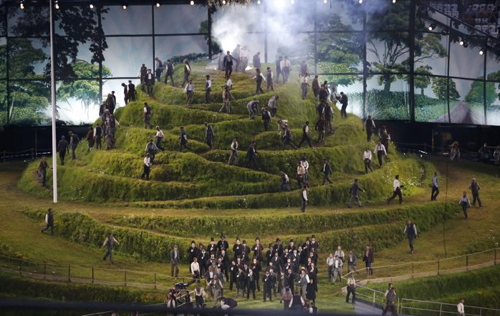
Glastonbury Tor is a place renowned in Christian and pagan mythology and figures prominently in both Celtic and Arthurian lore. Its central place in the Olympic festivities gives it an even more modern allusions. The sacred tree around which the national flags are planted goes back to pagan tree lore. Go read The White Goddess if you need any more explanation.
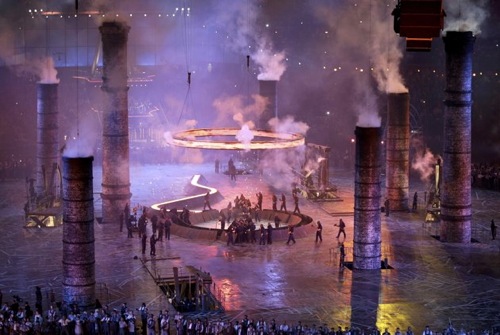
The whole forging of the ring sequence — surrounded by belching smokestack towers — was overtly Tolkienian, even if it didn’t directly reference the professor. It echoes the “Scouring of Shire” chapter of Lord of the Rings—Tolkien’s own allegory of the destruction of agrarian Britain by the advent of industrialization— while the visuals seem to reference Peter Jackson’s take on Isengard. I would say there is also some Wagnerian/Norse Das Rheingold in there, but best not to bring up Germanic lore here.
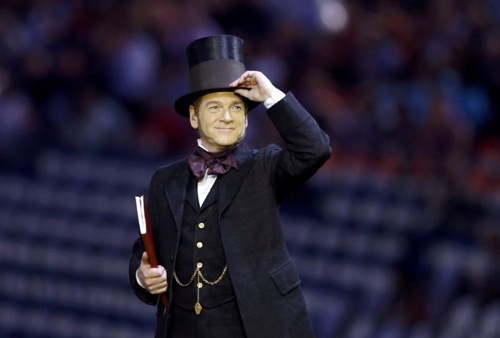
Kenneth Brannagh appeared as Isambard Kingdom Brunel, a cigar chomping engineer and architect, who designed railway grades and bridges. While he lived before the internet, Brunel seems the kind of guy who would today play D&D as an undergrad; he also designed the “train shed” where the Bristol Comic-Con is held.
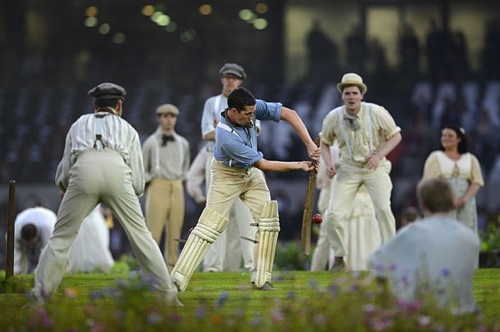
Blog: Susanne Gervay's Blog (Login to Add to MyJacketFlap)
JacketFlap tags: News, James Bond, London Olympics 2012, Alicia Coutts, Brittany Elmslie, Cate Campbell, Melanie Schlanger, Add a tag
The opening ceremony has the WOW factor.
Brilliant by the UK!!!!
Loved James Bond in all his forms taking the Olympic torch to the opening and the Queen parachuting in … so many highlights .. .
LAUREN Jackson has competed in four Games, won three medals in basketball and leads the Australian team into the Olympic stadium.
Alicia Coutts, Cate Campbell, Brittany Elmslie and Melanie Schlanger -100 metre relay GOLD!
Add a CommentBlog: Stacy A. Nyikos (Login to Add to MyJacketFlap)
JacketFlap tags: James Bond, Cold War, Russia, McCarthy, dystopian, David Almond, Maile Meloy, Rose Sees Red, nuclear bomb, The Apothecary, Cecil Castelucci, The Fire-eaters, Add a tag
The Apothecary
Maile Meloy
Young Adult
Something Cold War-ish must be in my reading water. I seem to be choosing books with a Cold War themes fairly regularly -- David Almond's The Fire-Eaters, which centers around the Cuban Missile Crisis, Cecil Castelucci's Rose Sees Red, which is set in the early 80s with the Cold War tension as a back drop to a friendship that develops between an American and a Russian immigrant, and now, The Apothecary. It's not the side effects of too much dystopian ya for dessert, I promise.
It was for dinner.
Nonetheless, if you find yourself feasting on dystopian but are looking for a little diversity in your dark, The Apothecary serves it up fresh and fun. The story centers around Janie, a teen whose writer parents are marked as Communists during the McCarthy witch hunts of the 1950s and thus forced to leave LA for London where they get jobs writing for the BBC. At her new school, Janie meets a boy, Benjamin, who wants to be a spy, a Russian boy whose father is, and a chemist-apothecary-physicist triangle trying to contain the effects of a nuclear bomb.
There are so many twists, James Bond-like chase scenes, an unexpected apothecarian surprises, replete with a serum that turns humans into birds and another that can make them invisible, as well as the threat of a nuclear bomb that does go off. It's all there in spades.
The biggest leap of faith I found strained in the novel were the serums. The book is so solidly set in the Cold War, that to expect a character, let alone the reader to buy into the fact that chemical compounds can do what alchemists believed they could do hundreds of years ago is tough. The author acknowledges this by having her character say that it would have been hard to believe her friend could turn into a bird if she hadn't actually seen it happen herself. Still, for me, it disrupted the fictional dream. I believed that chemstry and physics could come together to undo the destruction of a bomb, but to tie that right into the magicalness of herbs was a stretch.
Then again, I spent my teens in the Cold War era. I'm bomb scare scarred. Today's young audience will likely have far less trouble taking that leap. If the reader does, the book continues on in a fast-paced, no-holds-barred, edge-of-your-seat ride to the very end.
One other interesting note. The book is told from the perspective of the main character, Janie, albeit as an adult. I haven't run across too many POVs from this angle of late, and Meloy plays it lightly, allowing the adult only to surface at the very beginning and the end to lend the story an air of continuing mystery. It's well-balanced and a great example of how to use the adult POV to a writer's advantage.
For more great reads and winter distractions, sled on over to Barrie Summy's website. She's serving them up hot...and with marshmallows! Add a Comment
Blog: OUPblog (Login to Add to MyJacketFlap)
JacketFlap tags: World, Military, World War Two, ian fleming, donovan, *Featured, Ian Fleming's Commandos, nicholas rankin, fleming, matériel, james bond, Add a tag
By Nicholas Rankin
On 27th June 1941, in Washington D.C., Lt-Commander Ian Fleming RNVR drafted a short ‘Memorandum to Colonel Donovan’ on how to structure and staff the headquarters of his new American intelligence agency, COI, to be set up by Christmas 1941. Fleming suggested taking over a section of the FBI building and liaising closely with the Attorney-General and J. Edgar Hoover; Donovan would need to make friends with both the State Department and the FBI and enlist their full help ‘by cajolery and other means’. As Co-ordinator of Information, Donovan would have to ‘dragoon’ the War and Navy Departments into co-operation and be ‘prepared to take action quickly if they don’t help.’ Fleming recommended that Henry Luce of TIME magazine be asked to run Foreign Intelligence, a good “sapper” or military engineer should run Sabotage (a practical problem where romantics should not be encouraged), and Edgar Hoover should nominate someone to run Counter-espionage. Ian Fleming, who had a background as a Reuters news agency correspondent, thought Donovan would need a ‘Managing Editor with staff from a news agency foreign desk to receive and disseminate intelligence from a central office at GHQ’. He suggested consulting the head of Associated Press and getting staff from only one news agency to avoid jealousies and friction. There would have to be heads of country sections, liaison officers with other government departments, someone in charge of communications (‘A good Fleet Signals Officer’), someone to run matériel and transport (‘Consult American Express’) and many Field Officers (‘Pool the files of the State Department, Navy and Army, and pick the best. Appoint talent scouts to find more if necessary.’) Whoever recruited personnel should be a ‘thoroughly critical and sceptical man’. To liaise with the British Secret Service in London, Ian Fleming with his naval background naturally suggested people he knew through the Naval Intelligence Division: Commander Christopher Arnold-Foster and Captain Eddie Hastings. He wanted the closest cooperation between Britain and America: ‘Request CSS [the head of MI6] to allow your men in the field to work closely with ours’, and he advised judicious punishment pour encourager les autres: ‘Make an example of someone at an early date for indiscretion and continue to act ruthlessly where lack of security is concerned.’
Three weeks later, Fleming sent his boss Admiral John Godfrey, now back in London, a MOST SECRET cable about Donovan’s progress to date as Coordinator of Information.
1) Initial grant of ten million dollars placed at his disposal.
2) Washington personnel will be housed in Library of Congress and New York office will be at No. 2, Wall Street.
3) Skeleton staff should be at work by August 15th.
4) Information from Colonel Donovan will go direct to the President.
5) Emphasis has shifted towards strategical, economic and psychological research work and planning.
6) Propaganda in enemy countries will have a considerable role under ROBERT SHERWOOD, dramatist, working with radio corporations and Federal Communications Committee.
7) Geographical sections containing one naval, one military, one flying officer with civilian experts will be created. They will report to a Joint Intelligence Committee which will include Director of Naval Intelligence, Director of Military Intelligence, State Department. Their sources of information will be Service Intelligence departments supplemented by any fields they may be able to develop. These sections will also nominally repeat nominally be charged with Secret Intelligence Service, Special Operations 1 [propaganda] and Special Operations 2 [active operations] work
Blog: OUPblog (Login to Add to MyJacketFlap)
JacketFlap tags: james bond, World, Military, World War Two, godfrey, ian fleming, Editor's Picks, *Featured, Ian Fleming's Commandos, nicholas rankin, fleming, Add a tag
By Nicholas Rankin
On 15 May 1941, two Englishmen flew from London to Lisbon, at the start of a ten-day wartime journey to New York City. Though they wore civilian clothes they were, in fact, the Director of Naval Intelligence, Admiral John Godfrey, and his personal assistant, Lieutenant Commander Ian Fleming RNVR, the future author of the James Bond novels. What followed was to change American intelligence forever.
Until December 1941, the United States of America was neutral in the Second World War. In two years of open blitzkrieg, the Nazis had conquered much of Europe; Britain stood alone and broke, summoning aid from its overseas dominions and colonies. The British Prime Minister Winston Churchill remembered well that industrial America’s entry into the Great War in 1917 had assured victory. He needed a repeat, but the US President F.D. Roosevelt proceeded cautiously.
The first American aid to the Allied cause was spun as protecting an isolationist nation. In return for 50 old American destroyers for the Royal Navy, the USA obtained from the British Empire 99-year leases on a chain of strategic Atlantic bases: in Newfoundland, Bermuda, the Bahamas, Antigua, St Lucia, Jamaica, Trinidad and British Guiana. Between January and March 1941, there were also secret military and naval staff talks codenamed ABC – the American-British Conversations. Following these, the Chiefs of Staff and the Joint Intelligence Committee in London sent the two men to Washington DC to help ‘set up a combined intelligence organisation on a 100 per cent co-operative basis’.
The relationship of Admiral John Godfrey to Ian Fleming was like that of ‘M’ and James Bond, but also father/son. Fifty-three-year-old Godfrey had three daughters but no son; thirty-three- year- old Fleming had three brothers but no father. (Major Valentine Fleming DSO had been killed in the Great War just before Ian’s ninth birthday.) Admiral Godfrey had a brilliant mind but a volcanic temper; Ian Fleming was imaginative and imperturbable. He was a good fixer and drafted swift, crisp memos.
The two men flew KLM to Lisbon and then took the Pan Am Boeing 314 seaplane via the Azores to the British colony of Bermuda, 600 miles east of North Carolina, where the first American garrisons were building a base to help protect what President Roosevelt called ‘the Western Hemisphere’. Hamilton, Bermuda was where the British had set up the Imperial Censorship and Contraband Control Office to read the world’s mail, taken off transatlantic ships and planes. Fifteen hundred British ‘examiners’, also known as ‘censorettes’ because most were women, worked in the waterfront Princess Hotel, processing 100 bags of mail a day – around 200,000 letters – and testing 15,000 for microdots and secret ink messages, before sending on the bags on the next plane or ship. At first the USA objected to this infringement of liberty, but the Federal Bureau of Investigation (FBI) soon realised how useful the system was when it began to reveal foreign enemy agents on US soil.
Godfrey and Fleming arrived in New York City on 25 May 1941. They stayed at the St Regis Hotel on 55th Street and 5th Avenue in Manhattan and soon went to meet ‘Little Bill’, the Canadian businessman William Stephenson, and his American friend and ally ‘Wild Bill’, Colonel William J. Donovan.
The bullish Bill Donovan (a WW1 Medal of Honor winner and New York lawyer) had twice travelled to the war-zone on unofficial inquiry missions for the US president. All doors had been opened for him: Winston Churchill was eager for American help. Donovan had got on well with Admiral Godfrey in London in July 1940 and had met Fleming in Gibraltar in February 1941.
The other Bill, ‘the quiet Canadian’ Bill Stephenson, had been sent to the USA in June 1940 by the British Secret Service with the mission of improving relations with J. Edgar Hoover’s FBI. President Roosevelt recommended ‘t
Blog: Schiel & Denver Book Publishers Blog (Login to Add to MyJacketFlap)
JacketFlap tags: Curtis Brown, Ian Fleming, Charlotte Williams, Todays Picks, Jonny Geller, James Bond, booksellers, Agents, Add a tag
Ian Fleming Publications has appointed Jonny Geller and Curtis Brown as the literary agents worldwide for the Ian Fleming James Bond novels as well as future Bond literary works, taking over from Simon Trewin at United Agents.
Add a CommentBlog: OUPblog (Login to Add to MyJacketFlap)
JacketFlap tags: Music, Film, james bond, oscars, in memoriam, composer, lush, out of africa, kathryn, academy awards, died, barry, best song, Kathryn Kalinak, kalinak, score, Film Music, *Featured, best score, dances with wolves, john barry, symphonic, goldfinger, thunderball, Add a tag
By Kathryn Kalinak
The world of film lost one of the greats on Sunday: composer John Barry. British by birth, he carved a place for himself in Hollywood, winning five Oscars over the course of his career. He cut his teeth on James Bond films – Dr. No, (1962), From Russia With Love (1963), Goldfinger (1964), Thunderball (1965) – and went on to compose seven more. There was something both elegant and hip about these scores, a kind of jazzy sophistication that connoted fast cars, beautiful women, and martinis, shaken not stirred, that is. A jack of all musical trades, he turned to Born Free (1966) and gave it a lush symphonic score and hit song. By 1966, when he won his first Academy Awards (and he won two that year: Best Song and Best Score for Born Free), he became one of the most high profile film composers in the world. He was only 33.
He had an eclectic taste when it came to choosing films – small independent films, huge studio epics, and everything in between – coupled with wide-ranging and versatile compositional skill that could produce a twangy country and western-inspired score for Midnight Cowboy (1969), a jazz-infused score for The Cotton Club (1984), an anxiety-filled score for The Ipcress File (1965), a sensual score for Body Heat (1981), a synthesized score for The Jagged Edge (1985), and a symphonic sound for Out of Africa (1985). He will largely be remembered, though, for those Bond scores – as well he should. They musically define the texture of those films, their time and place, and above all Bond himself with the electric guitar riff that Barry brought to the 007 theme.
But it is the score for Dances With Wolves (1990) that I will remember him for. Like Out of Africa, it is lush, symphonic, melody-laden. But like no other western score that I know of, it manages to avoid the stereotypes for Indians that riddle many of Hollywood’s best western film scores. And I am certainly not the first or the only one to notice this: no tom-tom rhythms, no modal harmonies, no use of fourths and fifths, no dissonance to represent the Sioux
View Next 18 Posts





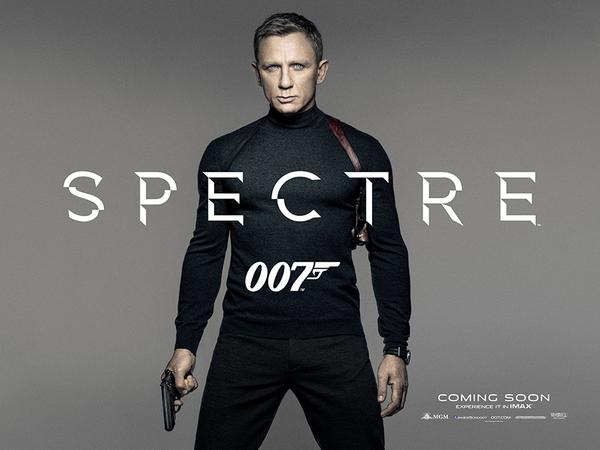
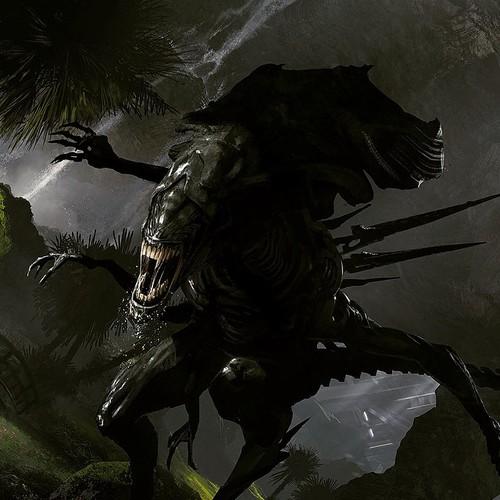
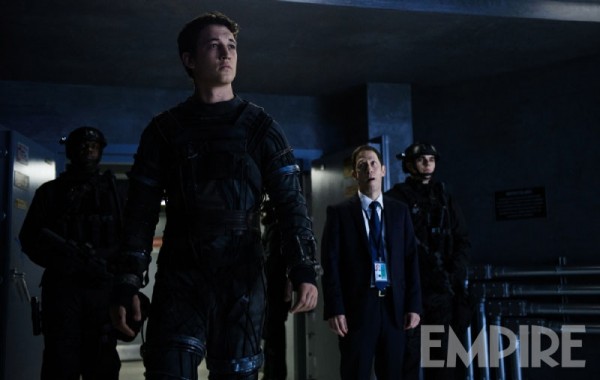


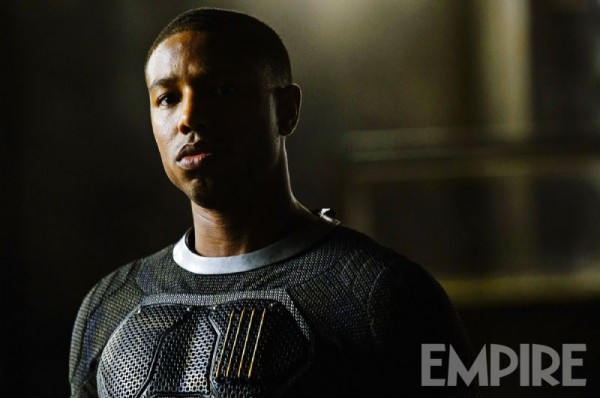







It’s beyond me why the general consensus finds Skyfall any good. The last hour hiding in that dark castle blowing stuff up was the most boring time I’ve spent in a cinema in ages. Which includes a couple of Michael Bay movies, that’s saying something. At least QoS was colorful.
Comics fans gushed over SKYFALL like no movie I’ve seen in years. I thought it was a good movie, but not the second coming of CITIZEN KANE. And that’s how a lot of fans treated it. Maybe these fans need to see more movies.